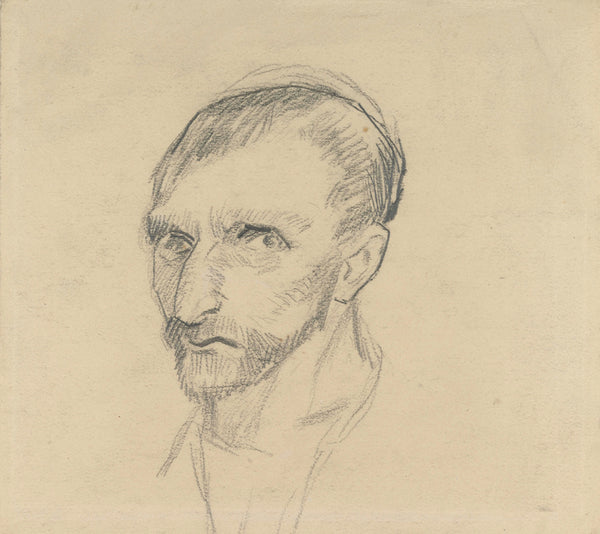Van Gogh and the Vibrancy of Drawing
Among the team at Nitram Charcoal, the mere mention of painter Vincent van Gogh is sufficient to recall images of brilliant yellow sunflowers, radiating red night cafés or the vibrating cobalt of the night sky. Equally captivating – though less appreciated – are the bevy of Van Gogh's drawings. Van Gogh was a prolific draftsman, with output ranging from intricate ink studies to quick charcoal sketches. Through these pieces one can sense the same artistic brilliance that resonated through his paintings, yet one can also catch a glimpse of the rigor of his technique. Freed from heavy impasto and intense pigments, van Gogh's drawings offer a streamlined look at the artist's true talents and the evolution of his technique over the course of his all-too-brief existence.

Self Portrait, 1887 - Pencil on paper. Van Gogh Museum, Amsterdam.
Throughout his artistic career, van Gogh placed particular importance on drawing. This emphasis was probably owed in part to the fact that he was primarily a self-taught artist, and thus sketching was an essential means of study. His insistence on drawing, though, went beyond just the need for technical training; rather, van Gogh espoused a true passion for drawing, sometimes using images when his words failed him. As he wrote to his brother, Theo, in June 1877, "as I sit here I cannot help making a little drawing now and then, like the one I sent you recently." This brief snippet is testament to the fact that van Gogh's extensive notes to his brother were dotted with diminutive drafts and sketches. In short, it was as if his drawings kept him company during his otherwise very solitary life away from his family.

Garden of the Hospital, Aries, May 1889 - Pencil, reed pen and pend and brush and ink on paper. Van Gogh Museum, Amsterdam.
As such, there is an intimacy to be construed from van Gogh's drawings, as if they are treating the viewer –however momentarily – to a glimpse of his world. They reveal the aspects of the everyday that fascinated him, from the profiles of little girls to the landscapes of his neighborhood. At the same time, they illustrate the early machinations toward some of van Gogh's most memorable paintings.

Man Drawing, Feb-June 1886 - Part of Paris Sketchbook – Chalk on paper. Van Gogh Museum, Amsterdam.
They also echo the course of van Gogh's career, which was tragically plagued with the instability of illness. As his paintings became more eclectic, his drawings became more intricate, as illustrated, for example, in the meticulous details of Garden of the Hospital, Arles. Conjured only a year before van Gogh's tragic demise in July 1890, this drawing alludes to the stability that rigorous drawing brought to the unstable figure of van Gogh. Art was a central backbone to van Gogh's existence, and it is through his drawings that one can trace this centrality most clearly.
Nursery on Schenkweg, April-May 1882 - Black chalk, graphite, pen, brush, and ink, heightened with white body color on laid paper watermarked ED & CIE (in a cartouche). Metropolitan Museum of Art, New York.
Have you had a chance to view van Gogh's drawings? What do you find captivating? Tell us here!
